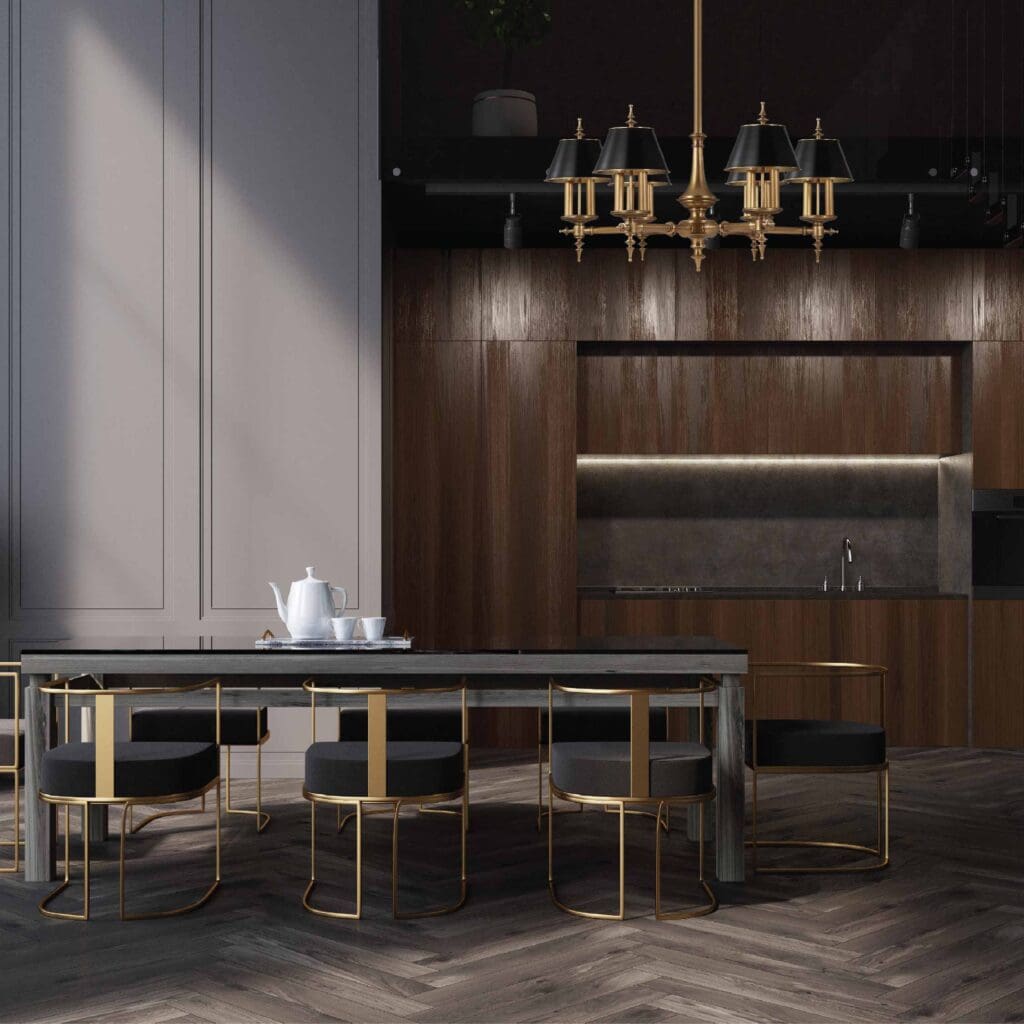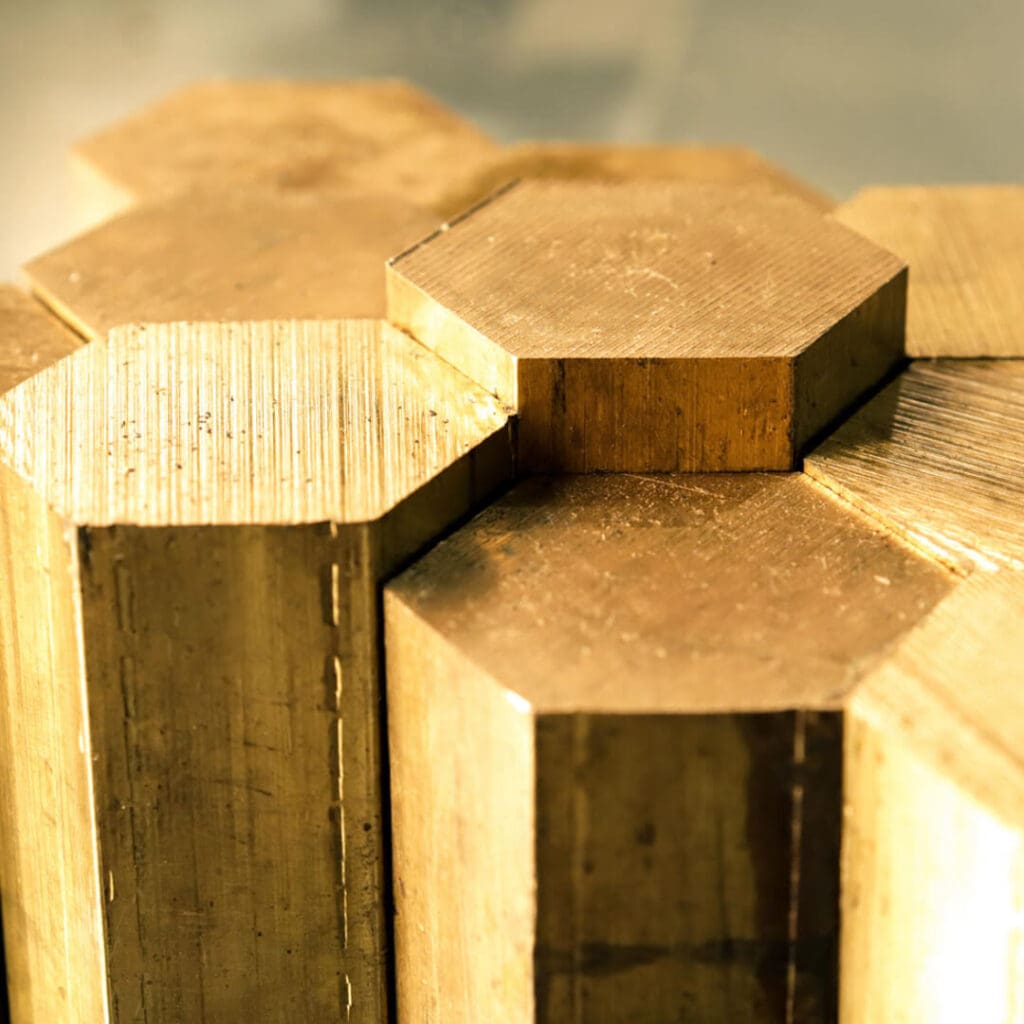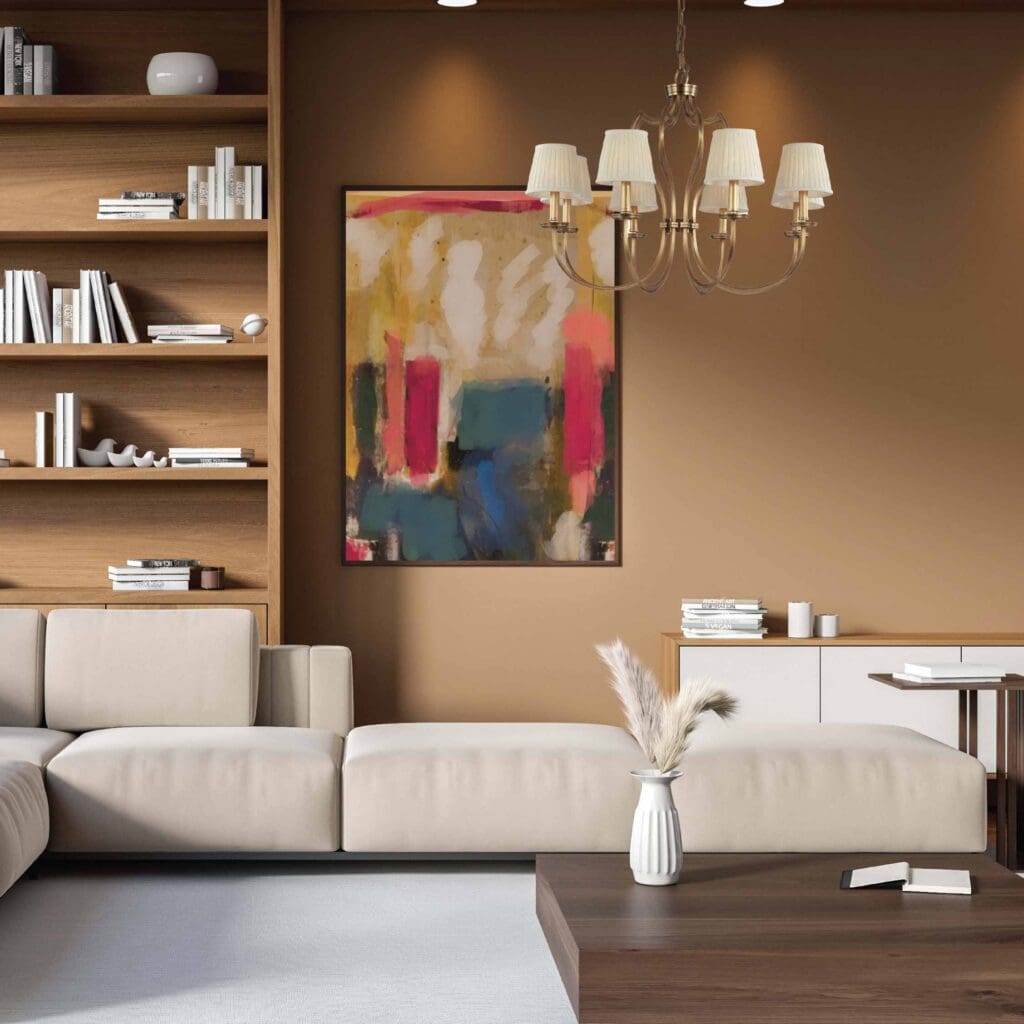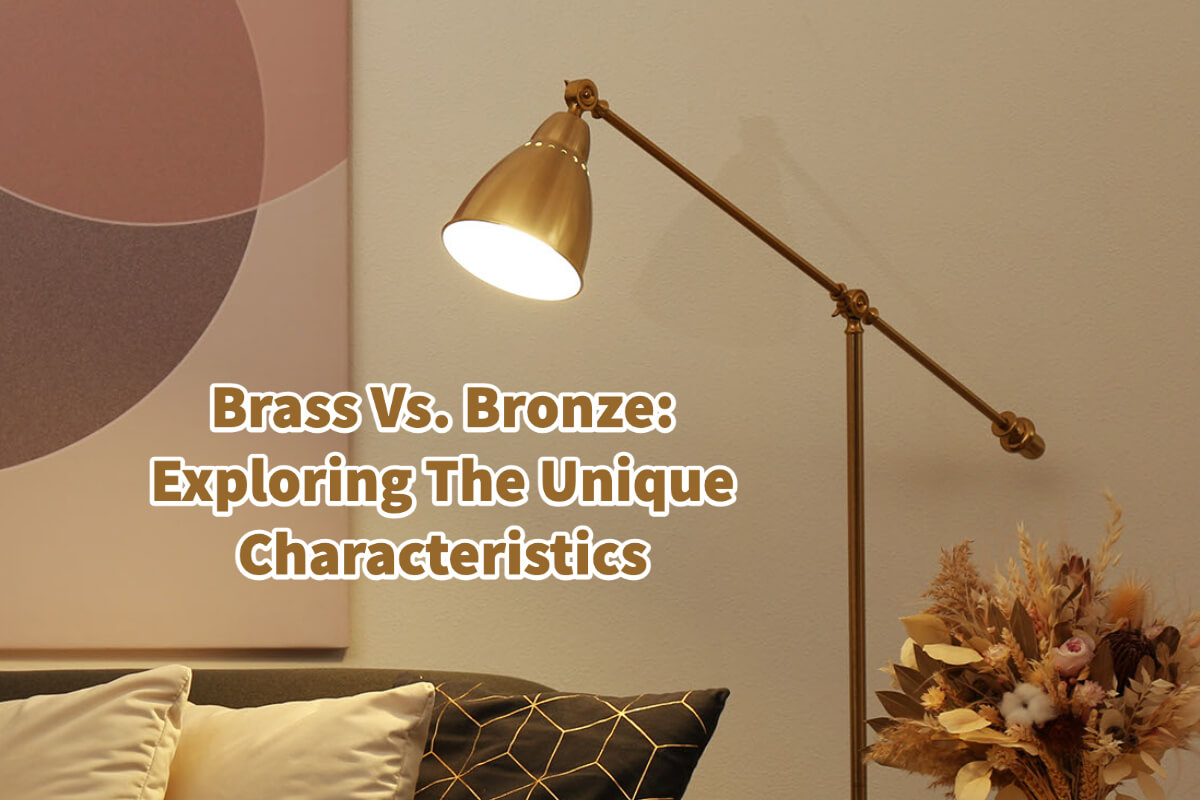Brass and bronze are two popular copper-based alloys used for centuries for various purposes. They are both metals that have been used for centuries.
Although their similarities in appearance and composition, brass and bronze have distinct differences in their properties and characteristics; understanding the unique attributes of brass and bronze is essential for making informed decisions when choosing the suitable alloy for a particular application.
Read on as we will explore the composition, properties, and applications of brass and bronze, as well as the advantages and disadvantages of using each alloy, especially for home furniture and home decor.
Table of Contents
- Understanding The Differences Between Brass And Bronze: Properties, Characteristics, And Applications
- All About Brass: Characteristics And Properties For Home Furniture And Decor
- All About Bronze: Characteristics And Properties For Home Furniture And Decor
- Frequently Asked Questions About Brass and Bronze Materials
- Related Content
Understanding The Differences Between Brass And Bronze: Properties, Characteristics, And Applications
Brass and bronze are two popular copper-based alloys with unique characteristics and properties that make them ideal for various applications. Brass is an alloy of copper and zinc, while bronze is an alloy of copper and tin, with other metals added depending on the application.
Both alloys have been used for centuries, with their earliest uses dating back to ancient times. However, despite their similarities in appearance, composition, and applications, brass and bronze have distinct differences in their properties and characteristics.
Understanding the unique characteristics of brass and bronze is essential because this knowledge can help you make informed decisions when choosing the suitable alloy for a particular application. For example, brass is known for its excellent corrosion resistance, low friction, and good electrical conductivity, making it ideal for plumbing fixtures, musical instruments, and electrical connectors.
On the other hand, bronze is known for its high strength, toughness, and resistance to wear and tear, making it ideal for marine applications, sculptures, and tools.
Exploring the differences between brass and bronze and the factors can help influence the choice. It is essential to understand which alloy to use for your specific application based on the unique characteristics of brass and bronze.
All About Brass: Characteristics And Properties For Home Furniture And Decor
Brass is popular in home furniture and decor due to its beautiful, warm appearance and unique properties. It is an alloy of copper and zinc, with varying proportions of each metal depending on the desired properties.

Composition And Properties Of Brass
Brass typically comprises 60-80% copper and 20-40% zinc, with small amounts of other metals such as lead or tin added for specific purposes. The amount of zinc in the alloy determines the properties of the brass.
For example, a higher zinc content will produce a more complex, brittle brass suitable for decorative purposes such as handles, knobs, and accent pieces. A lower zinc content will produce softer, more malleable brass, ideal for forming furniture parts and accessories.

Uses Of Brass For Home Furniture And Decor
In-home furniture and decor, brass is commonly used for various purposes, such as furniture frames, lighting fixtures, mirrors, and decorative accents. It is often chosen for its elegant, timeless look that can complement any decor style.
Brass can be polished to a high shine or left to develop a natural patina over time. Additionally, brass is a highly versatile material that can be easily shaped, making it ideal for creating intricate details and patterns.
Advantages And Disadvantages Of Using Brass
One of the main advantages of using brass in home furniture and decor is its durability and resistance to corrosion. It is also a relatively low-maintenance material that can be easily cleaned and polished.
However, brass can be expensive compared to other materials and may require special care to prevent tarnishing. Additionally, some people may be allergic to the copper content in brass.
Brass is a versatile and beautiful material that adds elegance and warmth to any home decor. Its unique properties make it ideal for various purposes in furniture and decor, and its durability and resistance to corrosion make it a popular choice for long-lasting pieces.
By understanding the composition and properties of brass, you can make informed decisions about using it in your home decor and furniture projects.
All About Bronze: Characteristics And Properties For Home Furniture And Decor

Bronze is a popular material for home furniture and decor due to its unique properties and warm, antique appearance. It is an alloy of copper and tin, with other metals added for specific purposes. Adding tin to copper produces a more complex and durable metal for creating long-lasting furniture and decor.
Composition And Properties Of Bronze
Bronze is an alloy of copper and tin, with other metals added for specific purposes. The proportion of copper and tin in the alloy determines the properties of the bronze.
Typically, bronze comprises 80-90% copper and 10-20% tin, but the exact composition may vary depending on the desired properties. Other metals commonly added to bronze include zinc, lead, and nickel.
Adding tin to copper produces a more rigid and more durable metal with a warmer color than pure copper. The tin atoms in the alloy occupy the spaces between the copper atoms, preventing them from sliding past each other and making the metal stronger.
Bronze is also known for its corrosion resistance, making it a popular choice for outdoor sculptures and architectural features. Also, bronze is a highly versatile material that can be easily shaped and cast into intricate details and patterns, making it ideal for creating one-of-a-kind furniture and decor pieces.
Bronze is also known for its resistance to corrosion and ability to take on intricate details when cast, making it a popular choice for sculptures, figurines, and decorative accents.

Uses Of Bronze For Home Furniture And Decor
In-home furniture and decor, bronze is commonly used for various purposes, such as furniture frames, sculptures, and decorative accents. It can add a touch of elegance and warmth to any decor style and is often chosen for its unique patina that develops over time.
Bronze can be polished to a high shine or left to develop a natural patina that adds character to antique pieces. Also, bronze is a highly versatile material that can be easily shaped and cast into intricate details and patterns, making it ideal for creating one-of-a-kind furniture and decor pieces.
Advantages And Disadvantages Of Using Bronze
One of the advantages of using bronze in home furniture and decor is its durability and resistance to corrosion. It is a long-lasting material that can withstand wear and tear over time, making it ideal for pieces meant to last. Additionally, bronze is a low-maintenance material that can be easily cleaned and polished.
However, bronze can be expensive compared to other materials and may require special care to prevent tarnishing. Understanding the unique characteristics of bronze and its care requirements is essential to make informed decisions about using it in your home decor and furniture projects.
Brass and bronze are two popular copper-based alloys with unique characteristics and properties that make them ideal for various applications. Brass is known for its excellent corrosion resistance, low friction, and good electrical conductivity, making it ideal for plumbing fixtures, musical instruments, and electrical connectors.
On the other hand, bronze is known for its high strength, toughness, and resistance to wear and tear, making it ideal for marine applications, sculptures, and tools. Both alloys have been used for centuries, and their popularity continues today due to their versatility, durability, and timeless appearance.
If you want to manufacture brass home decor and furniture, consider contacting Mondoro. Our team has extensive experience crafting high-quality brass and bronze pieces for various applications. We can work with you to design and manufacture custom pieces that meet your needs.
Whether you’re looking for furniture frames, decorative accents, or other unique pieces, we can help bring your vision to life. Contact us today to learn more about our services and how we can help you create beautiful and functional pieces for your home decor and furniture collection.
Find out more about how Mondoro can help you create, develop, and manufacture excellent home decor and home furniture products – don’t hesitate to contact me, Anita. Check out my email by clicking here or become a part of our community and join our newsletter by clicking here.
Mondoro gives out a FREE Lookbook to anyone interested. You can receive a copy of our latest Lookbook by clicking here.
Listen to our Podcast called Global Trade Gal. You can find it on all major podcast platforms. Try out to listen to one of our podcasts by clicking here.
Subscribe to our Mondoro Company Limited YouTube Channel filled with great videos and information by clicking here.
Frequently Asked Questions About Brass and Bronze Materials
What is the difference between brass and bronze?
Brass is an alloy made primarily of copper and zinc, while bronze is an alloy made primarily of copper and tin.
What are some common applications of brass and bronze?
Brass and bronze are used in plumbing fixtures, electrical components, musical instruments, decorative objects, furniture, and statues.
Are brass and bronze magnetic?
No, brass and bronze are not magnetic.
Do brass and bronze corrode?
Brass and bronze can corrode over time, especially when exposed to saltwater or acidic environments.
Are brass and bronze easy to machine?
Yes, brass and bronze are both relatively easy to machine and are often used in CNC machining.
Are brass and bronze conductive?
Yes, both brass and bronze are good conductors of electricity and heat.
Can brass and bronze be welded?
Yes, brass and bronze can be welded using various methods, such as brazing or soldering.
What are some common types of brass?
Some common types of brass include yellow brass, red brass, and naval brass.
What are some common types of bronze?
Some common types of bronze include phosphor bronze, aluminum bronze, and silicon bronze.
Can brass and bronze be recycled?
Yes, brass and bronze can be recycled and used to make new products. They are highly desirable materials for recycling due to their durability and versatility.
Related Content
Which Is Better, Nickel Or Brass?
Nickel and Brass are both excellent metal choices to use. Brass is a golden yellow, and Nickel is silver or almost grey. Both metals can be plated onto another metal or material, and brass can also be solid brass.
You can discover more by reading Which Is Better Nickel Or Brass? by clicking here.
Are Brass And Nickel The Same?
Both Brass and Nickel are metal finishes that can be electroplated or plated. They contain copper and can be made into unique and exciting looks and finishes. Because of their versatility, they remain popular metals and finishes for various products and uses.
You can find out more by reading our blog Are Brass And Nickel The Same? by clicking here.
Brass Plated Vs. Chrome Plated Metals Explained
Brass and Chrome are plated on metal in the same electroplating method, but the look and finish are not the same. Brass will be warm golden, whereas Chrome will look like shiny silver metal. Both are excellent electroplated treatments; choosing one can also depend on your desired look for a specific product.
You can discover more by reading Brass Plated Vs. Chrome Plated Metals Explained by clicking here.


